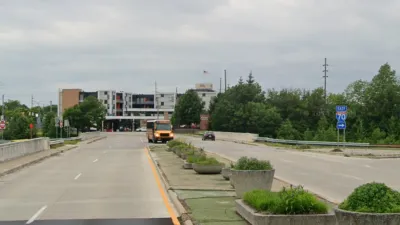Cities and engaged citizens want to create better places; so why is it so difficult to get a project approved, built, and installed? Reforming the permitting process could unlock the creative powers of citizens and designers to improve their cities.
"Outdated permitting processes are keeping a large swath of promising projects in art, design, technology, and other modes of expression from ever becoming part of the urban landscape," says Jake Levitas. "Along the way, cities are missing opportunities to add economic and cultural value in a time of constrained resources."
"The entire tactical urbanism movement exists largely as a band-aid solution for citizens who lack the resources, time, or patience to navigate this complex approval system, and prefer taking matters into their own hands to create local change. A key question moving forward is how this process can be opened up to look less like rocket science, and more like the DIY science kits that turn kids everywhere into excited, engaged brainstormers. How can we make the permitting process sexier to better engage the average citizen?"
Levitas looks at five principal barriers to reforming the permitting process, and offer some suggestions for how to overcome them.
FULL STORY: Better Permits, Better Cities

Maui's Vacation Rental Debate Turns Ugly
Verbal attacks, misinformation campaigns and fistfights plague a high-stakes debate to convert thousands of vacation rentals into long-term housing.

Planetizen Federal Action Tracker
A weekly monitor of how Trump’s orders and actions are impacting planners and planning in America.

San Francisco Suspends Traffic Calming Amidst Record Deaths
Citing “a challenging fiscal landscape,” the city will cease the program on the heels of 42 traffic deaths, including 24 pedestrians.

Defunct Pittsburgh Power Plant to Become Residential Tower
A decommissioned steam heat plant will be redeveloped into almost 100 affordable housing units.

Trump Prompts Restructuring of Transportation Research Board in “Unprecedented Overreach”
The TRB has eliminated more than half of its committees including those focused on climate, equity, and cities.

Amtrak Rolls Out New Orleans to Alabama “Mardi Gras” Train
The new service will operate morning and evening departures between Mobile and New Orleans.
Urban Design for Planners 1: Software Tools
This six-course series explores essential urban design concepts using open source software and equips planners with the tools they need to participate fully in the urban design process.
Planning for Universal Design
Learn the tools for implementing Universal Design in planning regulations.
Heyer Gruel & Associates PA
JM Goldson LLC
Custer County Colorado
City of Camden Redevelopment Agency
City of Astoria
Transportation Research & Education Center (TREC) at Portland State University
Jefferson Parish Government
Camden Redevelopment Agency
City of Claremont





























